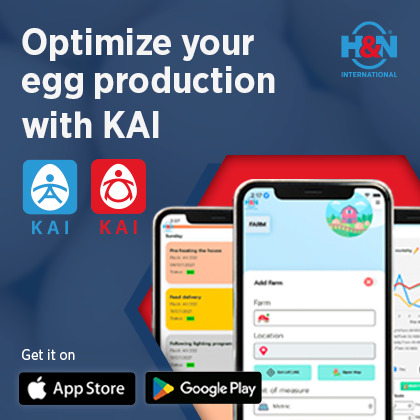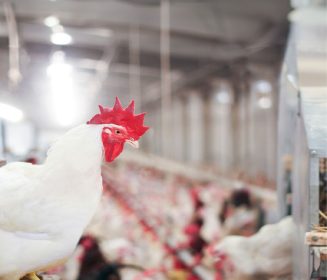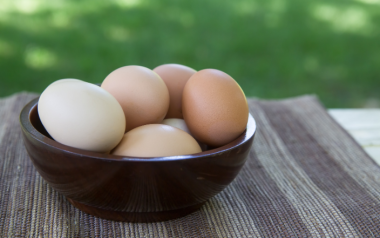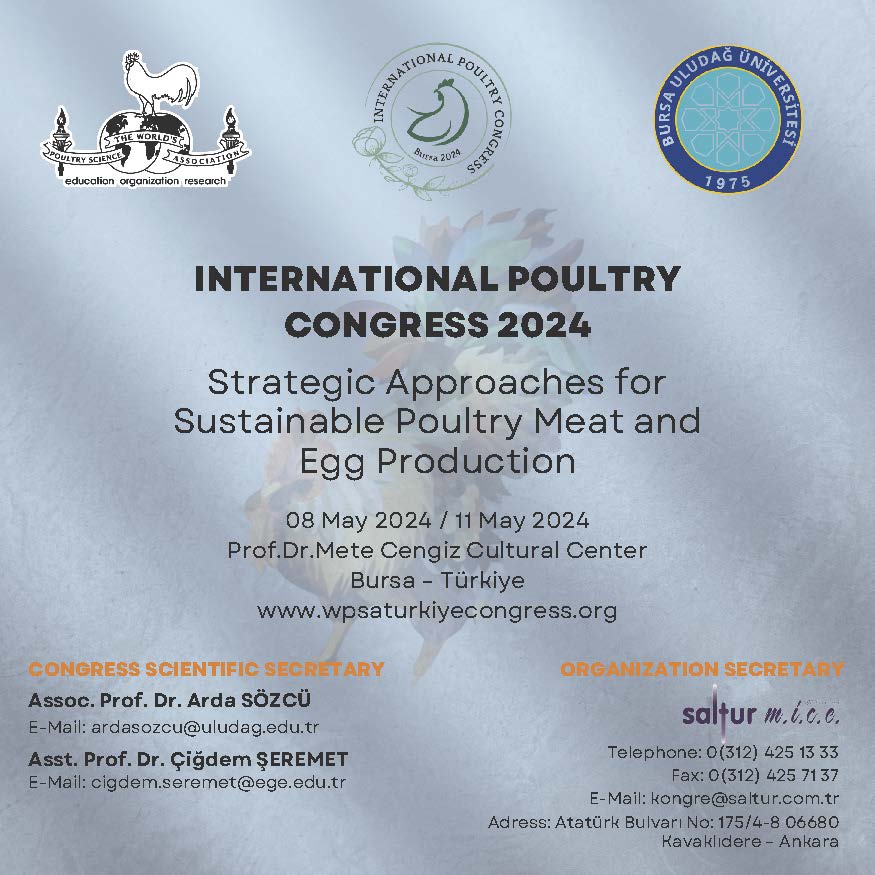Understanding pecking behavior in the poultry industry
Contenido disponible en: Español (Spanish)In addition to direct damage to the plumage, which is a problem for the welfare of […]
In addition to direct damage to the plumage, which is a problem for the welfare of the birds, pecking is also a serious problem from an economic point of view, due to the increased energy needs of the animal for thermoregulation and the risk of evolution towards cannibalism, with catastrophic consequences to the flock.
Pecking problems are frequent in several species of poultry operations: layers, breeding hens, turkeys, partridges, quails and pheasants.
Between all of them, it is in the laying sector that this behavior has been studied and investigated the most. Beak trimming is practiced as a measure to reduce the damage that underlies pecking behavior among birds.
In the European Union, the layer sector continues to transform and adapt to new requirements based on the welfare of the birds. After revolutionising installations and equipment in recent years, much attention has been shifted towards beak trimming.
Some countries like Austria and Sweden have banned this practice for some years now.
From their experience, we know that they have managed to control mortality deriving from cannibalism but not the pecking behavior in general, and they continue to study means to control it.
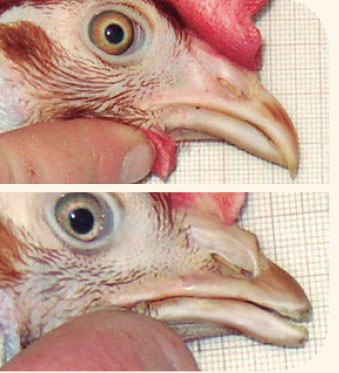
Figure 2 and 3. Effect of beak trimming: Layer without and with beak trimming
Feather pecking behavior is an abnormal behavior, classified as NON-aggressive, in which one bird bites or pulls, and sometimes plucks the feathers of another bird. It should not be confused with the pecking seen in the constitution of the social hierarchy.
This is aggressive behavior, but is usually limited to a single, quick and precise movement directed at the head or neck area.
Feather pecking can be classified into two different types:
- Moderate Pecking: Characterized by repeated but gentle pecking at the tips or edges of the feathers, without removing or plucking the feather. This type of pecking does not cause harm.
- Severe Pecking: Characterized by strong pecks and vigorous pulls, which often cause the plucking of the feather, causing damage to the receiver: loss of feathers, resulting in the appearance of plucked areas and skin lesions, which can cause wounds and bleeding triggering cannibalism with serious risk of death from bleeding or infection.
Pecking in its severe form can lead to cannibalism. Cloaca pecking falls under this classification. Once the protective function of the birds' plumage is lost, exposing the skin and possible underlying lesions, will trigger an outbreak of cannibalism, as soon as the birds get their first taste of blood.
Birds have a natural tendency to imitate others around them, so when one member of the flock begins severe pecking, others will do the same and cannibalism can spread rapidly among them causing high mortality.
Cannibalism is a serious problem of welfare, health and viability of the flock and therefore, an economic threat to the farm. Cannibalism episodes are often observed in flocks of laying hens, breeders, turkeys, pheasants, quail and ducks.
Pecking is an abnormal behavior of multifactorial origin. Several factors related to this behavior have been studied and described, which can be grouped into two categories:
- Internal factors: genetics, physiological status (hormones) and social motivations
-
External factors: management, farm type and facilities - (cage, aviary, farm) - nutritional factors and feeding strategy.
Pecking is an abnormal behavior with a multifactorial origin that can lead to cannibalism causing high mortality in a flock.
INTERNAL FACTORS
GENETICS
In recent years, genetic selection tests have been carried out and genetic lines with different levels of prevalence of pecking behavior have been obtained, indicating that there is a genetic basis for this behavior.
In 2001, Kjaer et al., In their genetic selection tests for layers with greater capacity to adapt to situations of fear and stress, concluded that there is a relationship between this characteristic and lower levels of pecking.
Recent studies, such as Bennewitz's (2014) on the genetic correlation between egg production and severe pecking, have revealed heritability on the genetic link scale between egg production capacity and this behavior. This leaves us conditioned, because if genetic selection can reduce pecking, it can also lead to undesired selection for lower egg production capacity.
PHYSIOLOGICAL STATUS - INFLUENCE OF HORMONES
Hormones have an important effect on the general behavior of animals and pecking is no exception.
The increase in progesterone and estrogen levels is related to the pecking behavior (Hughes, 1973), which explains the tendency to be observed at the onset of lay, when the levels of these hormones increase significantly.
SOCIAL MOTIVATIONS SOCIAL INTERACTION
Aggressive pecking and threat of aggressive behaviors are the main forms of social exploration / interaction that birds use to establish and maintain their social relationships, defining a stable dominance hierarchy, also called “pecking order” ( Savory, 1995; Riedstra and Groothuis, 2002). Dominant birds maintain their position in the hierarchy by resorting to aggressively pecking their subordinates.
The behavior of the dominant birds attracts the attention of the other birds, which tend to imitate them. If this behavior is repeated many times, it will awaken the attention of the group and the birds begin to pluck the feathers off of each other.
In smaller groups, the hierarchy is stable and the pecking or aggressive behavior is rarely observed. With the increase in the size of the layer flock in the new housing systems, both in enriched cages and in avian systems on the ground, the formation of a stable social hierarchy is complicated, since the birds are in permanent contact with new individuals, thus stimulating their exploratory pecking behavior.
On the other hand, large flocks with a greater tendency to peck can lead to many more victims and present a more difficult challenge to farm operators to identify and eliminate the more aggressive birds from the flock, increasing the risk of spreading this behavior throughout the flock.
STRESS FACTORS - MANAGEMENT, ENVIRONMENTAL CONDITIONS, DISEASES
Laying hens are able to cope with stress factors when they occur in isolation. Deviations from normal management or environmental conditions increase the risk of an outbreak of pecking.
Transferring the chicks from the rearing house to the production house is probably the most stressful time in their lives and the highest point of risk for the development of pecking behavior.
To minimize this impact, efforts must be made to ensure that the equipment and environmental conditions in the laying house are as similar as possible to those in the rearing house.
The reduction of the fear and stress of the layers, managing them in more complex environments during the rearing has achieved very positive results in the laying phase, reducing the levels of development of this abnormal behavior.
Light intensity is one of the factors that influences this behavior the most, especially in the presence of other risk factors, which can precipitate the packing further.
It is common in cage laying houses that the upper floors and side rows are the most susceptible to pecking problems, due to the lighting intensity being above the average of the house in those spots.
The installation of red lamps is another means of control and prevention, since wounds and hemorrhages appear black under red light, and therefore do not attract the attention of other birds.

Figure 5. Installation of red lamps in a layer farm
DIGGING / FORAGING BEHAVIOR
The domestication of birds has limited their freedom to perform some of their natural behaviors, such as soil bathing and digging / foraging (searching and selecting food in the ground), which they continue to be motivated to carry out even if they have the feed at their disposal.
The inability to complete these natural instincts induces a state of frustration and stress that can lead to the development of "stereotypical behaviors", which are repetitions of movements apparently without function, but which are somehow part of that behavior that the bird tries to perform but does not can. This explains why, in the absence of an appropriate substrate to forage, birds redirect their "foraging pecks" towards other birds' feathers.
FARM TYPE
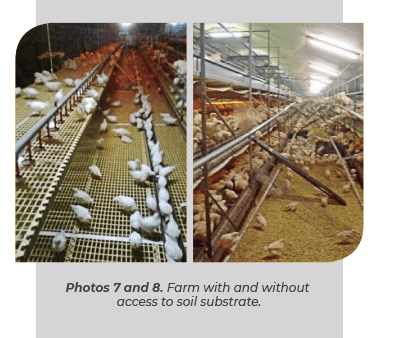
Laying hens housed without access to forage material have the highest stress and peck levels (H. El-Letthey 2000). Recent studies (De Jong et al., 2013) showed that the type of litter substrate in aviary has a great influence on this behavior, since the disposition of a suitable type of material increases / stimulates the normal foraging / digging behaviors, and discourages pecking of feathers.
NUTRITION - THE ESSENTIAL PART
Nutrition plays a very important role in the development of the pecking behavior.
The normal development and growth of feathers requires a balanced diet. An unbalanced diet or any deficiency in one of the essential nutrients in the diet for the formation of feathers, will affect their normal development.
Feathers consist of approximately 90% keratin - a special protein with fibrous structure, in β-sheets and α-helices - polypeptide chains formed by combinations of amino acids, where cysteine (sulfur amino acid) predominates, which are linked by hydrogen bonds and disulfide bridges between cysteines of different chains.
Figure 10. Amino acid and mineral composition of bird feathers
FEATHER INGESTION - HOW DOES IT BENEFIT BIRDS?
The keratin that makes up feathers is a poorly digestible protein in its natural state (less than 5%) (Fedna data). Due to its concentration in amino acids with hydrophobic groups, it is a protein insoluble in water and resistant to digestion by proteases or trypsin. The ingestion of feathers by birds gives them, above all, an effect similar to that of forage or cellulosic fiber, which provide some benefits for the efficiency of the birds' gastrointestinal system, such as increased gizzard performance and intestinal motility, stimulation of digestion and absorption of nutrients.
On the other hand, by increasing the speed of food passing through the intestine, ingested feathers could have a beneficial effect in reducing the presence of parasites or pathogenic microorganisms (Harlander-Matauschek in al, 2006), and increasing the effect of adsorption of toxic compounds by an organic material (Kay, 1982)
INSOLUBLE FIBER
In recent years, there has been many studies about the contribution of insoluble fiber to the digestive efficiency and health of birds. Experiments with layers have revealed that diets high in insoluble fiber or the addition of forages decreases their pecking behavior (Van Krimpen).
In addition to the benefits for digestion, the incorporation of insoluble fiber contributes to providing a prolonged feeling of satiety and, by having a diluting effect on the diet, increases the time necessary for feeding, leaving less time for feather pecking.
In 2012 I. Kriegseis et al. concluded in their experiments that pecking levels were lower in layers when their feed incorporated a percentage of feathers, even compared to layers with the same feed intake of insoluble fibre but of vegetable origin.
This can be justified by a special desire or need for animal protein, something that birds have always had in an accessible form in the wild, eating insects and worms.. In this line of research, several experiments are being carried out using insects as a protein source - protein of animal origin.
FEED
The physical presentation of the feed also influences pecking behavior. The shorter time required to ingest the feed in granular form, compared to the intake of mash, leaves more time free to develop feather pecking behaviour.
REASEARCH OF NEUROBIOLOGICAL PATTERNS IN PECKING
Neurobiological studies on pecking have revealed the influence of brain monoamines, mainly serotonin and dopamine. This abnormal behavior is associated with low levels of serotonin and dopamine in the brain (Marjolein S. Kops et al, 2014).
Since tryptophan is a precursor in serotonin synthesis and an essential component in the diet, any deficiency will increase the incidence of pecking.
Pecking is an abnormal behavior influenced by different factors. Operators attempting to avoid or reduce this problem in poultry must try to understand its causes and take into account the complex multifactorial mechanisms involved. We must focus on the factors that we can control and bet on prevention.
Among these factors we highlight nutrition as the essential part in preventing pecking. A balanced diet is the basis for the health and welfare of birds and their plumage. It is also important to regularly monitor the state of the birds' plumage, which will allow us to identify the pecking from its beginning and to implement control strategies to prevent the problem from worsening.




